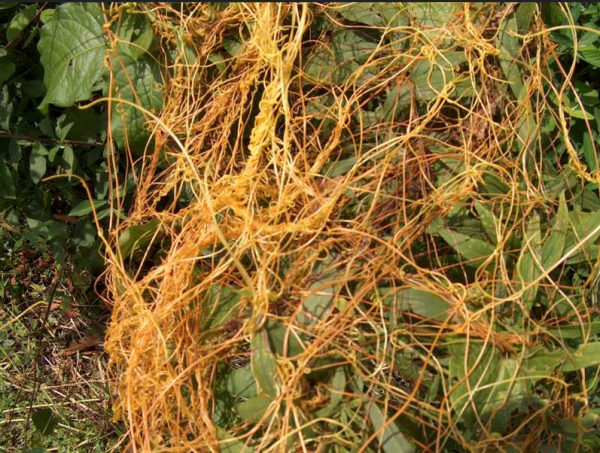Dodders are one of the most unique parasitic plant species found around the world. In a recent study, researchers from the Kunming Institute of Botany of the Chinese Academy of Sciences discovered how the dodder flowers.
The parasitic plant is a type of seed-bearing vine. It is thread-like, colored yellow or orange, and rapidly entwine their host plants. There are nearly 50 species of dodders and are typically found in tropical and warm areas.
After finding a suitable host, the parasitic plant will insert roots into the stem of the host, also known as haustoria. The penetrating roots absorb the host plant's nutrients, minerals, and water.
Compared to other autotrophic plants, the morphology of dodders is defined as having no roots or leaves as well as to conduct little or no photosynthesis, making the plant a holoparasite. Flowering is part of plants reproducing.
Flowering Cycle
Leaves typically sense environmental factors such as day hours and climate and initiate flowering within appropriate and favorable conditions. Since dodders don't have leaves and lack the necessary genes that autotrophic plants have for flowering, the team of scientists looked into how the species reproduces.
As a parasitic species, Wu Jianqiang and the team discovered that the Cuscuta australis dodder synchronizes its flowering time to match its host's reproduction cycle. The FLOWERING LOCUS T PROTEIN or the FT gene of autotrophic plants is an essential protein that signals and activates flowering.
Analyzing the C. australis FT gene led the team to discover that it is a pseudogene or a type of gene that is non-functional since they do not encode for proteins. Pseudogenes are typically duplicates of the parental gene.
The team also used biochemical tools to demonstrate how the host plants express FT signals. The C. australis receive the FT gene signals to induce flowers to activate its flowering program. Soybeans and tobacco host plants were used in their experiments.

(Photo: Screenshot from Missouri Botanical Garden official website)
Eavesdropping on Host Plants
'The dodder does not flower autonomously; instead, when the host plant produces the FT signal protein to activate flowering, the host-produced FT protein is transported into the dodder, thereby activating dodder flowering,' explained WU. The team describes the parasitic behavior as eavesdropping on the host plant's FT flowering signals to synchronize its flowering process.
Eavesdropping FT genes allow dodders to parasitize various types of plants as a host. If a dodder species has a specific flowering time that is different from its host plant, the level of nutrients of the host would usually decrease due to seed development. In this case, the host plant may die before the flowering time of dodders. If dodders have a flowering cycle earlier than the host, its growth will happen prematurely and will not make as many seeds as dodders who have synchronized their flowering time to their host plant.
The paper looks at the evolution of dodder species which can help the agriculture and forestry sectors control parasitic weeds. (The Science Times)
(Editor:YANG Mei)




